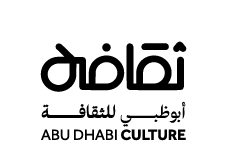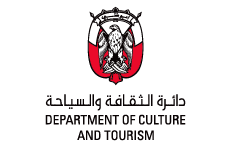What is Abu Dhabi’s modern heritage?
The modern heritage of Abu Dhabi refers to cultural significant examples of architecture and urbanism that narrate the significant historical, socio-cultural, and economic changes that took place in the Emirate since the distribution of wealth generated from the export of oil.
Modern heritage may be architectural or urban places and encompasses structures, single or groups of buildings, districts, sites, areas, landscapes and urban spaces that are important due to their aesthetic, architectural, historical, scientific, social or technological values to past, present or future generations.
Modern heritage is considered an intrinsic part of Abu Dhabi’s tangible heritage and cultural identity. The cultural significance of modern heritage is embodied in the place itself and in its character-defining elements such as material fabric, forms, location and setting, spatial configurations, uses and cultural associations or meanings
Why is Modern Heritage Significant?
Modern heritage comprises the most recent layers of Abu Dhabi’s recent history. Modern heritage draws its significance from historic, political, symbolic, social, economic, aesthetic or technological values. These sites may be important because they are associated with significant persons or events that have shaped the Emirate. These sites and their urban context might derive their significance as symbols of integrating modernization with tradition or because they are local paradigms of urban planning and architectural design in the last 50 years.
Modern heritage buildings may be significant for their aesthetics, technological values; while modern urban heritage sites are markers of rapidly evolving urban character in response to social and cultural changes.
A SHARED RESPONSIBILITY
Safeguarding modern heritage is now required by Abu Dhabi's Cultural Heritage Law (4/2016), which considers all tangible and intangible heritage, irrespective of its age. It is a civic responsibility towards present and future generations.
Modern heritage provides a sense of permanence and continuity. These sites contribute to the live ability of the Emirate and the well-being of its residents by fostering a sense of community through place making and collective memory.
Modern Heritage will contribute to Abu Dhabi's sustainability goals by reducing the carbon footprint resulting from demolition and redevelopment. The initiative can diversify the economy by stimulating alternative real estate investments into reuse and revitalization of the existing built environment.
Protecting and leveraging Abu Dhabi’s modern heritage will contribute to nurturing Abu Dhabi’s aspiration to become a cultural capital.
What are the criteria for registering modern heritage?
A modern heritage site shall be listed on the Register of Modern Heritage of Abu Dhabi if it is culturally significant and satisfies one or more of the following criteria:
- Is important in demonstrating the evolution or pattern of Abu Dhabi’s history or yields information that will contribute to the understanding of Abu Dhabi’s history.
- value or due to the fact that it demonstrates a high degree of creativity at a particular period in technology, architecture, monument design, town-planning, or landscape design.
- Has a strong or special association with a particular community, locality or cultural group for social or cultural reasons; or has a special association with the life or works of a person, or group of persons, of importance.
- Contributes to the collective memory of a particular group or the nation at large by serving as a physical reminder of that memory and by increasing their emotional bond with that particular resource.
How can we safeguard modern heritage?
The first step is to acknowledge, document and celebrate the importance of Abu Dhabi’s architectural and urban heritage.
Investing in regular preventive maintenance and cyclical remedial repairs will prolong the physical fabric of these sites in a more cost-effective way. Rehabilitation or compatible adaptations, sensitive upgrades and additions can ensure the continued use of these sites.
Accepting these sites as assets that add value to new developments and drive revitalization programs is key to guiding sustainable development.
The full list of 60+ modern heritage sites includes:
- Cultural Foundation
- Abu Dhabi Bus Terminal and Taxi Stand
- Al Manhal Palace
- Zayed bin Sultan The Second Mosque
- The National Theatre
- Former Al Jazeera Hospital
- Sheikh Zayed Sports City
- Islamic Institute Complex (Former UAEU)
- Niqa Bin Ateej Water Tank and Park
- Radisson Blu Hotel & Resort, Al Ain
- Al Jahili Eid Prayer Grounds
- Al Khalidiyah Park
- Al Ain Old Central Market
- Abu Dhabi Chamber of Commerce and Industry Tower
- Al Bateen Mall
- Intercontinental Hotel - Abu Dhabi
- Radisson Blu Hotel & Resort, Abu Dhabi Corniche
- Hili Old Market (Shaabi Market)
- Zayed Al Awwal Secondary School – Oud Al Hassa
- Former ADNOC Headquarters
- Al Maqta Conservation Area
- Former Vehicles & Drivers Licensing Directorate
- Bida’ Zayed Central Souq
- Arab Monetary Fund Building
- Etisalat Headquarter – Abu Dhabi
- Federal National Council
- Saeed Al Kalili (Al Ibrahimi Building)
- Heirs of Salem Khadem Al Qubaisi Building
- HH Sheikh Mohammed Bin Zayed Tower (Blue Tower – Union National Bank)
- Hamed Center
- Obaid Al Mazrouai
- Butti Al Otaiba Building
- Harib Tower













